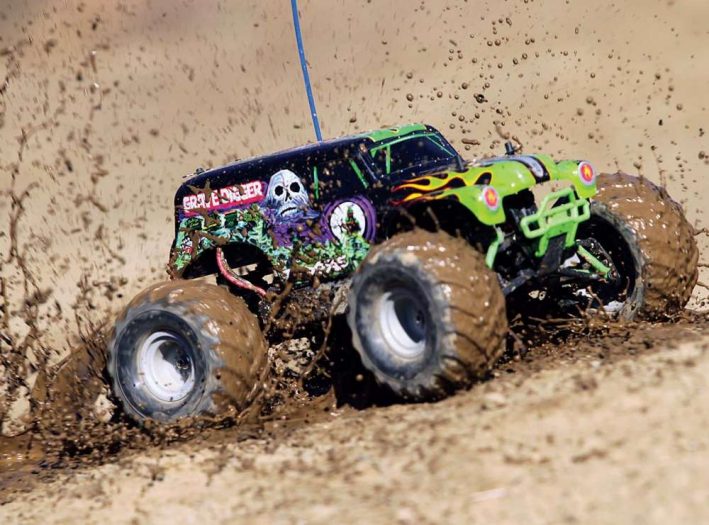You like the water? This tech talk will take us into one the most loved areas of RC, waterproof RC! These days, it’s not at all uncommon to find videos on the internet of RC cars being driven completely into, over, across, and through water, mud and all sorts of muck. A few years back, feats of this nature were not commonplace, and generally always ended with the replacement of some electronics. Luckily, times have changed, and more and more gear is being touted as waterproof. But not so fast.

What does waterproof mean?
The item getting wet and not dying depends on how it gets wet, and what exactly happens to it after. Read your manual carefully and look over the fine print to make sure there is nothing simple you might miss.
Even if your electronics are waterproof, your poor vehicle’s drive train and bearings are not. Sealed bearings might help keep some water out for short periods of time, but after a few good floggings, you’ll have some very nice bushings instead.
After care for your waterproof RC car or truck
Use fresh water, a small brush, and some light splashing to get the big chunks out. After that you really should re-oil your bearings.
Some have reported good luck using spray lubricants. The good old “Water Displacement” lubricants being used for their actual purpose apply here as well. Just make sure you actually get bearing oil back into the bearings. They will seem fine after you clean them, and if you’re lucky, they will work O.K. the next time you drive. Eventually the bearings stop being bearings, and you will need to rebuild. Some post-mud cleaning attention to detail will do wonders for your rig!
Take precautions before you run your RC in water
It’s not at all a bad idea to remove the electronics before you start the cleaning process.
Removing and cleaning your electronics carefully can lengthen their life spans and allow you to do basic inspections.
Spend extra time on your motors. They have the two hardest working bearings in your rig, and usually, the motor gets blasted by muck. Clean it out, re-oil the bearings and give the motor a solid once over to make sure it’s going to be OK.
Brushed motors are the same. The dirt wears out the brushes and gets into any bushings or bearings to speed up the wear and tear. Thorough cleanings will do wonders to keep your motors healthy for longer.
Waterproof RC D.I.Y. – Plastic Dip and Lubricants
Don’t have new gear that’s touted as waterproof? Well, have no fear; the world of RC has you covered. It’s pretty common to see plastic dip style materials used.
Word of caution; make sure you find material that is OK for electronics. Not all of them are.
If you are not a fan of dips, there are also simple spray-on options.
Electronics lubricants, or corrosion remover/stopper sprays can be found online or even at hardware stores. These sprays are specifically for electronics and water corrosion prevention and removal. They leave an oily film on everything, so they are not ideal for all. However, they do work and often can fix electronics that have stopped from water damage, but are not burned or stinky.
Often water damage is not terminal, but it creates small shorts that makes the electronics simply not work even though there’s no significant damage. The spray will clear out any corrosion that has created small shorts and bring them back to life.
It is even simpler step to just cover your sensitive gear. Make a small box, or shield to act as a splash guard or mudflap to stop the mud and water from even getting to your electronics. Make them large so air can still flow, and leave some venting to let the hot air out.
Wrap up
If you do find your rig in the water and you didn’t want it there, the first thing you should do is unplug the battery and give the vehicle several “hard shakes” to get the water out of it. Take the body off, take the battery out, and give it a few hours in the direct sunlight. More then a few rigs have been saved by this very simple tactic.
Words: Charlie Suangka
 RC Driver The Best In RC Car & Truck News, Reviews & Video
RC Driver The Best In RC Car & Truck News, Reviews & Video 







